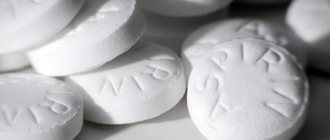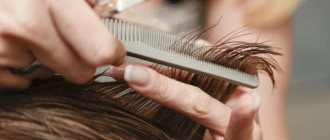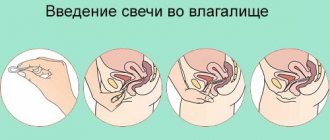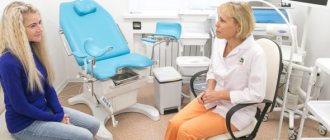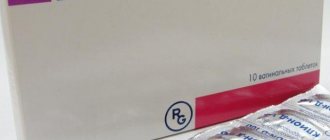Menstruation is an important process for every woman, when her body cleanses itself and restores itself, preparing to go through another life cycle. And since this time is quite difficult, the body gets tired and needs relaxation. And the first thing that comes to people’s minds when they hear the word “relaxation” is a hot bath with essential oils and thick white foam, pleasant aromas and time spent exclusively on relaxation. However, is it possible to take a bath during your period? Many girls are concerned about this issue. How to understand the effect of hot water on the body during this period, and how to know if something goes wrong? We collected the most frequent and widespread opinions about whether it is possible to bathe in a hot bath during menstruation, asked the opinion of gynecologists and found out the parameters that are recommended to be observed if you want to relax in this way.
Why can't you swim?
It is believed that lying in the bath for a long time if these days have arrived is dangerous and is categorically not recommended. That this can be harmful and it is better to use a shower, because washing in running water is more hygienic. Supporters of this opinion often themselves cannot name objective reasons why this should not be done, and refer to the advice of their girlfriends.
You can hear different versions:
- This is unhygienic as the bath and body are covered with germs;
- And the purity of the water that flows from the tap leaves much to be desired;
- During bathing, dirty water flows into the vagina, and from there into the uterus;
- Vaginal discharge enters the water and then settles on the skin and hair;
- Bathing during menstruation can cause fainting;
- Water that is too hot causes bleeding.
If we summarize all the main reasons why it is better to refuse the desire to splash around in hot water during menstruation, a logical conclusion arises.
Women are most concerned about the aesthetic and hygienic side of the issue. There is also a threat to a woman’s intimate health associated with hot water. However, all these points are easy to get around if you want.
Let's try to figure out whether it is possible to take a bath during menstrual periods and what are the dangers of hygiene procedures in hot water?
Possible complications
As mentioned above, staying in hot water for too long is fraught with large blood losses and, as a result, general weakness of the body. You need to take a bath during your period very carefully, using only clean water, to prevent infection from entering the uterus. However, many doctors recommend dissolving special additives in water that stimulate a woman’s good mood, refresh her, relax her, and restore her vigor:
- This could be sea salt, which, when dissolved, gives the bath water a pleasant aroma and color. It is useful because it is often made from natural materials. As we remember, a woman’s immune system is weakened during menstruation and cannot resist external irritants, which increases the risk of unpleasant reactions to them.
- You can also add essential oils, such as mint, lemon balm and other plants. They soothe the skin, and thanks to their aromas they refresh and give pleasant vigor. A correctly selected bouquet can set a woman in a certain frame of mind and give her precious moments alone with herself.
See also: Tampon at night - is it possible to go to bed with a hygiene product?
Why is hot water dangerous?
Indeed, taking a hot bath whose temperature exceeds 38 degrees is not recommended. The consequence may be an increase in the volume of discharge, even uterine bleeding. And this is already a very serious problem. The fact is that during menstruation, the spent endometrium is detached. This process makes the lining of the uterus look like a gaping wound.
In order for the walls of the uterus to heal faster, blood clots form, which clog the places where the tissue has collapsed. When exposed to high temperatures, blood clots worse, new blood clots do not form, and old ones lose their viscosity and leave the uterus along with the blood. Therefore, after a hot bath, you may find that the blood comes out in clots.
Important! Hot water dilates blood vessels. Blood circulation in the body accelerates, including in the genital area, so the intensity of discharge increases.
This will be especially noticeable by girls who normally have very heavy discharge. And if a woman is prone to hypertension, then a hot bath is fraught not only with heavy bleeding, but also with a sharp deterioration in well-being. The woman may feel dizzy, the woman will feel her heartbeat speeding up and may even lose consciousness. Therefore, hypertensive patients should not immerse themselves in hot water at all, and not just on a red day of the calendar.
Other "temperature" methods
Hot bath or shower to induce period?
You can take a shower. After all, menstruation comes faster because it is exposed to heat. If you stand in the shower and direct a stream of very warm water to your lower abdomen, this can work in the same way as taking a bath. Some people recommend standing in the shower for about twenty minutes, actively “massaging” the lower abdomen with a stream of water.
Warmer
Like a hot bath, a heating pad filled with hot water is sometimes used to induce periods. It is applied to the lower abdomen. This also increases blood flow through the vessels in this area, and menstruation occurs earlier.
How to avoid consequences
In addition to observing the temperature regime, it is important to organize special conditions in order to comfortably take a bath during menstruation. This applies to the use of cleansers and methods of protecting the vagina from possible infection.
When taking a bath, follow a number of rules:
- It is best to take a bath at the beginning or on the last day of your period, when the discharge is not as heavy.
- Rinse the surfaces of the bath thoroughly, disinfect with a cleaning agent, rinse thoroughly and pour over with boiling water.
- Take the required amount of water, mixing hot and cold so as to reach a temperature no higher than 36-37 degrees.
- If you have a water supply without a filter, you need to disinfect the water. Regular potassium permanganate is suitable for this. Add just a little bit until the water turns slightly pink.
- During menstruation, it is better not to use foams and bath salts. But you can add chamomile infusions or lavender essential oil.
- To prevent discharge from getting into the water and water from flowing into the vagina, use feminine hygiene products. Use a tampon while bathing or use menstrual cups as an alternative.
- Immerse yourself in the water and enjoy your favorite treatment. Try not to take a bath for longer than 15 minutes these days.
- Before getting out of the bath, rinse off in the shower. Take out the tampon and wash the outside of your genitals. Washing the vagina is not recommended, especially with soap. The alkaline base of the soap irritates the delicate mucous membrane and destroys the microflora.
If you are still in doubt about the safety of bathing in the bathroom, pay attention to the video. Here you will learn many common myths about hygiene procedures.
Precautions when swimming on critical days
If you really want to swim, and you decide to break the ban on swimming these days, then you need to follow simple rules to protect the body:
- A tampon must be used during water procedures to avoid infection. The procedure takes no more than 10 minutes, as the tampon then swells and needs to be changed. Girls can also use tampons that are designed specifically for virgins (mini tampons).
- If you want to take a bath, you can add chamomile and sage. These products are a good antiseptic and have an analgesic effect. The bath should take no more than 30 minutes and the water should not be hot.
- After swimming, you need to take a warm shower and put on clean underwear.
- Now there are silicone cups (menstrual caps) that serve as protection against germs. This cup fits tightly to the vaginal wall and protects it. You can use it for about 5-6 hours.
Where can you swim during menstruation and where not?
- Is it possible to go to the bathhouse during menstruation? Sauna, bathhouse should be excluded during menstruation. Heat stress should be avoided, as heat is bad for menstruation. Heavy bleeding or nausea or dizziness may occur;
- Is it possible to go to the pool during your period? How to go to the pool if there is discharge? The water in the pool is clean, but the chlorine that is added for cleaning can cause allergies and skin irritation. Many modern swimming pools have sensors installed that react even to small particles of blood and color the water a different color. Which may put you in an awkward position;
- Is it possible to swim in ponds? You should not swim in stagnant bodies of water (lakes, ponds). There is a great risk of catching an infection. Swimming in the river and sea is allowed (subject to safety precautions).
Dream Interpretation: why do you dream about Shoes, to see Shoes in a dream, what does it mean? Why do you dream about selling shoes?
05.01.2021
Male names with meaning
05.01.2021
Why do we dream about Weapons? Dream Interpretation: weapons in a dream. The most detailed interpretation of the dream Weapons Dream Interpretation interpretation of dreams why we dream about weapons
05.01.2021
Therapeutic baths
Women are often prescribed therapeutic radon baths, for example, to treat endometriosis or fibroids. The question arises: is it possible to pamper yourself with a procedure during menstruation as part of the treatment of diseases or is it better to postpone it until later. Menstruation is not included in the list of contraindications to the treatment procedure, so radon baths can be taken during menstruation. The main thing is to follow the rules outlined above.
Note! Sessions in a radon bath must be planned every other day; staying in the water for no longer than 20 minutes is allowed.
Radon therapy has the effect of pain relief and wound healing, relaxes and normalizes metabolic processes. Thanks to the disinfecting effect of radon, infections during menstruation are out of the question.
As you can see, the ban on taking a bath during menstrual days is largely a fiction. By following basic hygiene and temperature rules, you can splash around in the bath any day, regardless of whether you have your period or not.
How to shorten periods using traditional methods
For those who believe that swimming during menstruation is prohibited, but are planning a trip to the sea or have purchased a subscription to the pool, there are folk ways to deal with heavy discharge. They are risky to use, so it is advisable to discuss their use with your doctor. The following herbs are used in folk medicine:
- Shepherd's purse.
- Nettle.
- Peppery knotweed.
- Raspberry leaves.
- Mint.
- Corn silk.
From this video you will learn about the rules of bathing during menstruation:
It is also advised to drink a lot of sweet tea and press on the bridge of the nose several times a day - this will help reduce the amount of fluid secreted. Traditional recipes include drinking pomegranate juice or red wine.
Is it possible to take a bath during menstruation?
Hygiene issues during menstruation are of particular importance. During the period of bleeding, a nutrient medium for pathogenic organisms is formed, with a decrease in immune status, inflammation develops, and chronic infections worsen. In order not to increase the risk, you need to carefully observe genital hygiene. Is it possible to take a bath during menstruation, and how often to do it - a question that worries many women.
Is bathing even allowed during menstruation?
Of course, the period of menstruation is considered special, but some representatives of the fair sex do not want to limit themselves to anything during these few days. Completely forgetting about the possible risk of contracting an infection, they bathe not only in the bathroom, but also visit swimming pools and city beaches with open water bodies. Is there really a danger?
Considering the structure of the female genital organs, we can judge the minimum penetration of water into the uterine cavity. Scientists have proven that this phenomenon is impossible in principle, however, they do not deny the possibility of infection at the time of the opening of the cervical canal on critical days. Therefore, it’s up to you to decide whether to swim or not, because for the sake of pleasure, in a few minutes you risk acquiring infectious inflammation of the pelvic organs.
You can or cannot take a bath, and why
Menstrual bleeding is a natural process in the body of a healthy woman. But not everyone experiences it smoothly and painlessly. The reason lies in hormonal disorders, chronic infections and diseases of the uterus, which can intensify it:
- endometriosis;
- fibroids;
- endometrial hyperplasia.
If you bathe in the bathroom during your period, you can get inflammation of the uterus. Menstrual blood is a breeding ground for microbial pathogens. And before menstruation, immunity decreases, chronic infections can worsen:
- vaginal candidiasis;
- trichomoniasis;
- nonspecific vulvovaginitis.
Features of anatomy
Let's consider aspects of the physiological process. Menstruation begins because fertilization has not occurred, and the endometrium is removed from the uterus with blood discharge. It peels off and comes out through the slightly open cervix. In fact, these days a bleeding wound forms inside the uterus. It is because of this that the risk of infection is high, even despite the fact that only a few drops of water can get through the small hole of the slightly open neck.
However, with wounds and cuts on the skin, when water gets on them, infection or infection does not occur. There is such a risk, but this does not mean that the wound will necessarily become inflamed and fester. Therefore, taking a bath is possible under certain conditions of cleanliness and hygiene.
Using a hot bath
In some cases, a hot bath may be used to induce menstruation. These are conditions when the delay is not related to pregnancy. Lack of menstruation may occur due to spasm of the internal cervical os. In this case, the endometrium is rejected, but does not come out, blood accumulates inside the organ. If the blood flow is not restored, hematometra develops - a condition that requires the help of a doctor. In order for a hot bath to help induce menstruation, you need to take an antispasmodic (No-spa, or Drotaverine), and then immerse yourself in a bath with a temperature of 38-39 degrees for 6-7 minutes. If the reason for the delay is cervical spasm, then your period should begin after the bath.
What if there is a delay?
Find out the reason first. What if this is pregnancy? Then you definitely shouldn’t make such a “challenge” to menstruation. It may be dangerous to your health
. By the way, even if it is not pregnancy, it does not mean that everything is fine. On the contrary, a delay may indicate serious gynecological diseases.
It happens that menstruation does not come, although it is already due, for other reasons:
- stress and emotional turmoil,
- climate change,
- increased physical activity.
Rules for taking a bath during menstruation
If a woman prefers a bath to a shower, then during menstruation you need to follow simple recommendations so as not to worsen your condition. Endometriosis and uterine fibroids are accompanied by heavy, painful menstruation. Some girls have physiologically heavy, long periods. In this case, you should refuse a hot bath, even to relieve symptoms. At the beginning of the menstrual cycle, you should give preference to the shower. You can wash in the bathroom with minor discharge that is coming to an end. In other cases, bathing procedures should be carried out with water at 36-37 degrees, comfortable for the body. They should last no more than 10 minutes. The bath itself should be thoroughly cleaned. Immediately before diving, you need to wash your genitals in a bidet to prevent blood from getting into the water. Under no circumstances should you try to wash the vagina or douche. This washes away the natural microflora of the vagina and can lead to infection of the uterus. Trying to take a bath with a tampon inside will cause water to be absorbed into it. This will serve as an additional risk of developing inflammation. A bath during menstruation is allowed if it is short, not hot and does not cause discomfort. But for personal safety, you need to refrain from it until the bleeding stops.
What are the contraindications
There are contraindications to the use of hot baths during menstruation:
- tendency to bleed;
- blood diseases;
- exacerbation of chronic diseases;
- oncological processes;
- endometriosis;
- cervical erosion;
- damage to the mucous membranes of the genital organs.
You should not take a bath if you have candidiasis, heavy discharge or sexually transmitted infections. If you have the above problems, you need to find out the opinion of doctors about taking baths or other thermal procedures. If there are contraindications, gynecologists do not recommend risking your health. Pain during menstruation is eliminated using medications.
The presence of menstruation does not exclude hygiene procedures. Women can take baths only if there are no serious problems in the sexual sphere. In order not to provoke undesirable consequences, for safety reasons, experts insist on bathing in the shower and prohibit visiting bodies of water, public places - a swimming pool or a bathhouse - during critical days.
Stuchka.ru has already told you that a hot bath is contraindicated during menstruation. Today we are studying whether it causes menstrual periods.
On the forums you can find so many conclusions on this topic that you want to convince everyone. For example, they say: take a hot bath and your period will come the next day. That's the whole recipe for those who have a delay and who are worried about it. But is everything so simple and is it worth breaking your cycles to please yourself?
Personal hygiene
A woman taking a bath during her period should know how to properly wash her external genital organs. It is recommended to wash yourself before and after taking a bath. Compliance with personal hygiene rules prevents possible infection from entering the vagina.
In this organ there is an acidic environment - microflora. Water entering the vagina can wash it out. It is necessary to take into account that soap completely destroys and washes away microflora. After water procedures, it is recommended to wear dry and clean underwear.
In natural reservoirs and pools you cannot overheat, since the water temperature rarely exceeds the norm. This increases the risk of infection. Before swimming in a pond or pool, it is recommended to use a menstrual cup. At the end of the water procedures, the tampon is removed.
Teenage girls can use special mini-tampons that do not violate the integrity of the hymen and the vaginal microflora. It is recommended to take into account that the tampon only absorbs water that gets into the vagina. It does not protect the female body from infections.
You cannot swim in stagnant bodies of water (a huge number of microbes). You can stay in the pool and lake for 20 minutes. Prolonged stay in cool water can lead to hypothermia of the uterus and the development of an inflammatory process (after 3-7 days). Gynecologists recommend refraining from water procedures in the first 3 days of the menstrual cycle.
Contraindications for water procedures during menstruation:
- baths or saunas - due to increased temperature, blood flow increases, dizziness and nausea appear. The woman may lose consciousness;
- swimming pool with chlorinated water. Chlorine if it gets into the vagina causes irritation or an allergic reaction. Discomfort appears and inflammation develops. Prolonged exposure to chlorinated water can cause fatigue and loss of consciousness;
- swimming in the sea - sea water is rich in salt, which can lead to irritation and contamination of germs;
- pain and cramps - if such symptoms appear, it is not recommended to swim (shower only). Otherwise, the pressure will increase or decrease, which will negatively affect your overall well-being.
Is it possible to lie in the bath during menstruation using herbal decoctions?
The answer to this question is yes. This procedure will give a healing and healing effect. You just need to know which herbs can be used and which cannot.
It is better to choose herbs with a hemostatic effect:
Decoctions of these herbs will help reduce the amount of discharge and reduce the risk of bleeding when taking a bath.
Other pleasant herbs for bathing during menstruation are:
You can add a few drops of chamomile, juniper, and pine oils. But you should be careful with citrus oils and invigorating substances. In a warm bath, they act quite actively, pinching the skin and greatly activating all body processes, which is not very desirable during menstruation. The same goes for mint and lemon balm herbs. It is not recommended to add decoctions of these herbs during menstruation, as bleeding may increase.
Pregnancy and water treatments
Menstruation often occurs in the 1st or 2nd trimester of pregnancy. During this period, you can take a bath, observing the following rules:
- the bottom of the bathtub is first covered with a rubber mat (to prevent falls);
- take a shower first;
- the bathroom is rinsed with hot water;
- the water temperature should not exceed 38 degrees. Otherwise, the risk of fetal defects increases. You should not take a hot bath or go to the sauna in the 1st trimester of pregnancy (miscarriage will occur).
From 4-14 weeks of pregnancy, frequent and prolonged use of a hot bath can lead to various abnormalities in the cardiac, vascular and nervous systems. Such deviations can provoke a frozen pregnancy. Due to the systematic exposure of hot water to the female body (in the 2nd trimester of pregnancy), the placenta may detach. And in the 3rd trimester, hot water can cause premature birth.
Due to pressure surges, there is a lack of oxygen, which can cause fainting. During menstruation, water is poured into the bath up to the heart area. If necessary, place a towel under your head. It is recommended to take a bath with the door slightly open (steam removal and fresh air supply).
If you go, you can wash in the bath for 15-20 minutes. After water treatments with salt and oil, take a shower. In the last months of pregnancy, bath procedures are carried out under the supervision of a doctor, especially if menstruation occurs during this period. After bathing, the expectant mother should lie down for 30 minutes. Then moisturizing milk, lotion or cream is applied to the skin.
Bath procedures are contraindicated during menstruation and pregnancy in the following cases:
- low pressure - hot water helps to dilate blood vessels and sharply reduce pressure. In hypotensive patients, this condition can lead to loss of consciousness and injury from a fall;
- for hypertension, a hot bath helps to increase blood circulation and increase the load on the heart and blood vessels. Hypertensive crisis and stroke may develop;
- varicose veins and hemorrhoids - a hot bath can lead to thrombosis and inflammation of the veins;
- ovarian cyst;
- uterine fibroids;
- risk of miscarriage;
- diabetes mellitus type 1 - a hot bath causes blood sugar levels to drop below a critical level, which can lead to glycemic coma;
- cold with fever - hot bath increases bleeding.
Gynecologists advise taking a warm shower during the menstrual cycle and pregnancy 2-3 times a day. It is possible to take a bath during this period, but it is not advisable and should be done with great caution.
Some girls, especially in early puberty, have a very negative attitude towards the fact of menstrual bleeding. This literally throws them out of their usual way of life for several days, forces them to change their habits and take into account the needs of their body. But the mother who explains the reason for menstruation to the girl for the first time must do it correctly. Bleeding is an indicator that in the future the girl will be able to become a mother, this means that her body is able to bear a child. It is important to treat menstrual bleeding as a good sign that everything is fine with the teenager’s women’s health.
But over time, a woman has many questions regarding life during menstruation. How to use hygiene products correctly, how to limit physical activity. But many who like to soak in warm water have a question: is it possible to take a bath during menstrual bleeding? To understand this, you need to know how a woman’s body functions during menstruation.


